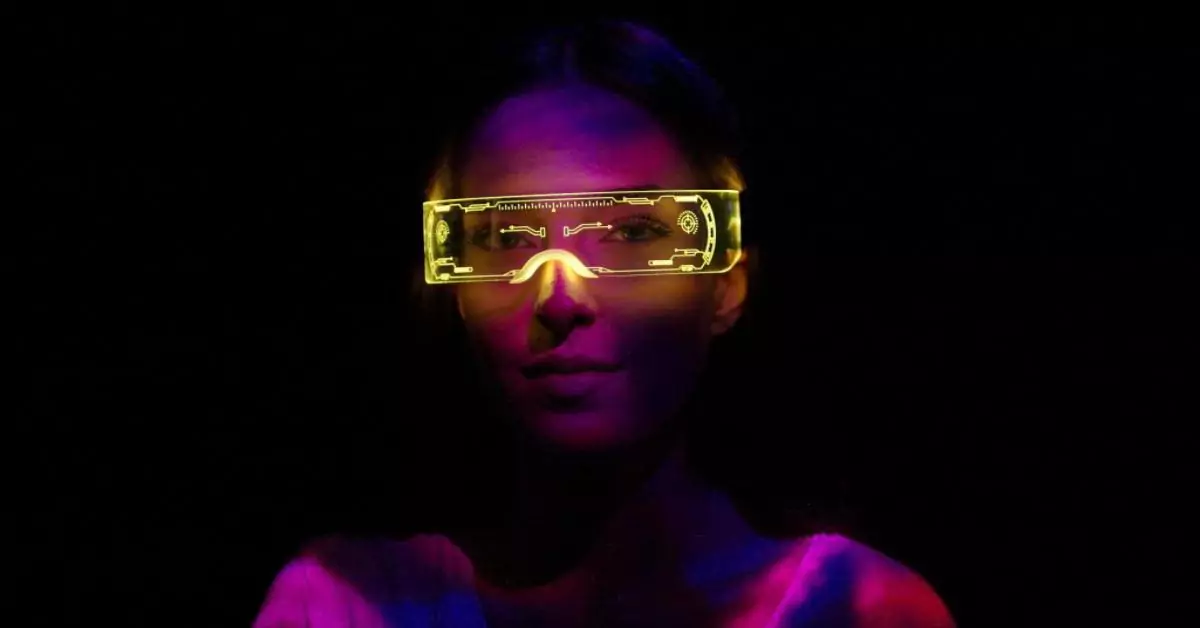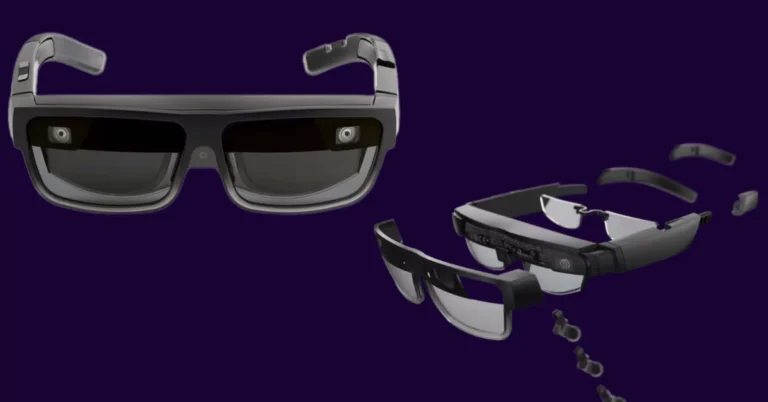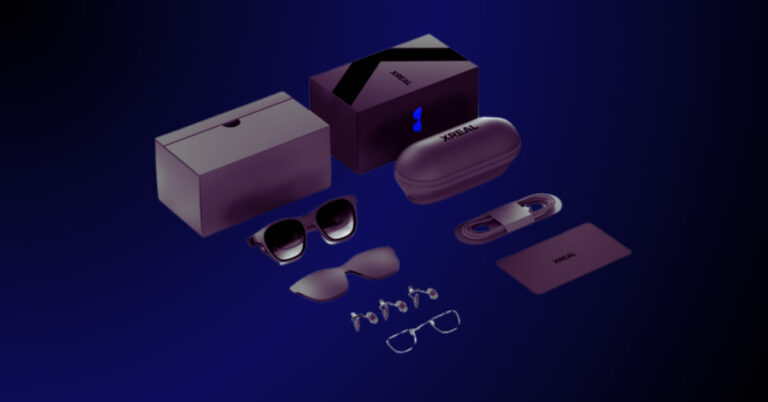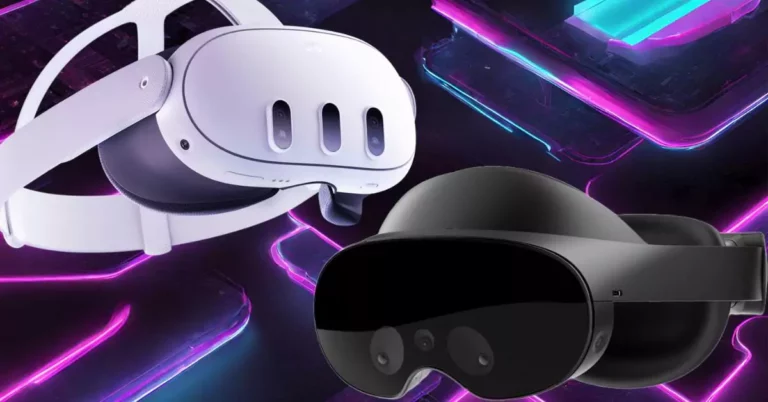The world of Augmented Reality (AR) glasses is an exciting one – where the boundaries between the real and digital realms blur to create thrilling and immersive experiences right before your eyes. These innovative devices have the power to transform the way you interact with the world around you.
But, before you take the leap into this futuristic technology, it’s essential to weigh both the advantages and drawbacks. In this article, we’ll explore the pros and cons of AR glasses, giving you a clear understanding of how they can enrich your life while also being mindful of their limitations.
As with any emerging technology, potential users should consider every aspect of using Metaverse glasses before diving in.
Table of Contents
Plus Points of AR Glasses
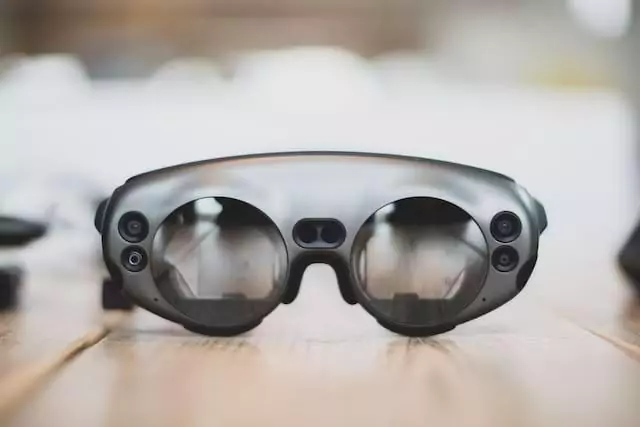
- Enhanced Connectivity: Metaverse glasses enable users to interact with digital content in real-time, offering opportunities for communication, collaboration, and social networking on a whole new level.
- Immersive Experiences: By integrating AR, VR, and MR technologies, augmented reality glasses provide users with highly immersive experiences, allowing them to engage with virtual environments and digital objects in more realistic and interactive ways.
- Enhanced User Experience: AR glasses overlay digital information onto the real world, providing users with an enriched and interactive experience.
- Hands-Free Interaction: These glasses allow users to access information and interact with digital content without the need to hold a separate device, promoting convenience and ease of use.
- Real-Time Information: AR glasses can display real-time data and relevant information directly in the user’s field of view, making it easy to access important updates and context-specific details.
- Personalized Content: XR glasses can be tailored to an individual’s preferences, offering personalized content and experiences based on user data and preferences.
- Professional Applications: In various industries like healthcare, engineering, and logistics, these devices can assist professionals by providing real-time guidance, data visualization, and hands-free access to critical information.
- Enhanced Learning and Training: AR glasses can revolutionize education and training by enabling interactive and immersive learning experiences, making complex concepts easier to understand.
- Augmented Gaming: Such glasses open up new possibilities for gaming, blending the virtual and real world to create engaging and interactive gaming experiences.
- Improved Navigation: The glasses can offer AR-based navigation, guiding users with visual cues and directions, especially useful for walking, driving, or exploring unfamiliar places.
- Social Interaction: They can facilitate enhanced social interactions by overlaying virtual elements onto the real world, allowing users to collaborate and share experiences.
- Accessibility: They can assist individuals with disabilities by providing real-time assistance and accessibility features, making the world more inclusive.
- Integration with IoT and Smart Devices: The devices can seamlessly connect and interact with other IoT devices and smart appliances, creating a connected and intelligent environment.
- Future Potential: As AR technology continues to advance, AR glasses hold immense potential to revolutionize various aspects of our daily lives, making them an exciting technology for the future.
The Flip Side of AR Glasses

- Cost: Metaverse glasses can be relatively expensive, especially for high-end models, which may make them inaccessible to some potential users due to the high upfront investment.
- Technical Limitations: Some Metaverse glasses may have limited battery life, field of view, or image quality, impacting the overall user experience.
- Battery Life: Many AR glasses have limited battery life, which can be a hindrance for extended use, especially during tasks that require prolonged engagement.
- Design, Comfort and Ergonomics: Depending on the design, some Metaverse glasses may not be comfortable to wear for extended periods, leading to potential discomfort or fatigue for users.
- Privacy Concerns: AR glasses can raise privacy concerns, as they may record and analyze real-world interactions, leading to potential issues with data security and privacy.
They can also collect and transmit data leaving users vulnerable to data breaches or unwanted surveillance. - Limited App Ecosystem: The availability of AR applications may be limited compared to other devices, potentially restricting the range of experiences for users.
- User Experience Challenges: The glasses may face challenges with calibration, accuracy, and seamless integration with the real world, leading to sub-optimal user experiences.
- Distractions and Safety: These devices could be distracting, particularly when used while walking, driving, or performing other activities, potentially compromising safety.
- Social Acceptance: Widespread adoption of AR glasses in public spaces may raise social acceptance issues, as others might perceive wearers as disconnected or preoccupied.
- Health and Comfort Concerns: Extended use of these glasses may cause discomfort, eye strain, and fatigue, leading to health concerns for some users.
- Dependence on Connectivity: Many glasses rely on stable internet connectivity and processing power, limiting their functionality in areas with poor network coverage.
- Limited Field of View: Some glasses have a restricted field of view, which can limit the amount of augmented content that users can see at any given time.
- Content Quality and Relevance: The quality and relevance of AR content can vary significantly, leading to inconsistent and sometimes underwhelming user experiences.
- Societal Impact: As with any new technology, AR glasses may lead to changes in societal behavior, etiquette, and norms, which may not always be positive.
Drawbacks may vary depending on the specific make and model of AR glasses and the advancements made in AR technology over time. And of course, as technology progresses, some of these cons may be mitigated, and the overall AR glasses experience could improve.
But as there seems to be room for a lot of research and improvement in this field, one has to keep in mind any negative impact these devices can have.
Some Final Words
AR glasses have unveiled a world of exciting possibilities, offering users enhanced experiences, increased productivity, and access to valuable information at their fingertips.
The seamless integration of digital elements into our daily lives brings convenience and entertainment, revolutionizing various industries.
However, it’s essential to acknowledge the limitations, such as potential privacy concerns and the need for continued technological advancements. As you delve into the realm of AR glasses, we have to be mindful of the fact that a balance has to be there between embracing the benefits and staying aware of the challenges.
Know more about the Metaverse’s immersive realm through VR headsets here, which will help you bridge the gap between reality and the digital landscape. You can delve even deeper into this transformative experience and explore answers to FAQs related to XR experiences here.
Whether you’re an early adopter or contemplating the future of this technology, understanding the pros and cons empowers you to make informed decisions. Step into the augmented world with curiosity, an open mind, and an eye toward innovation and you’ll be good. For the most part.

